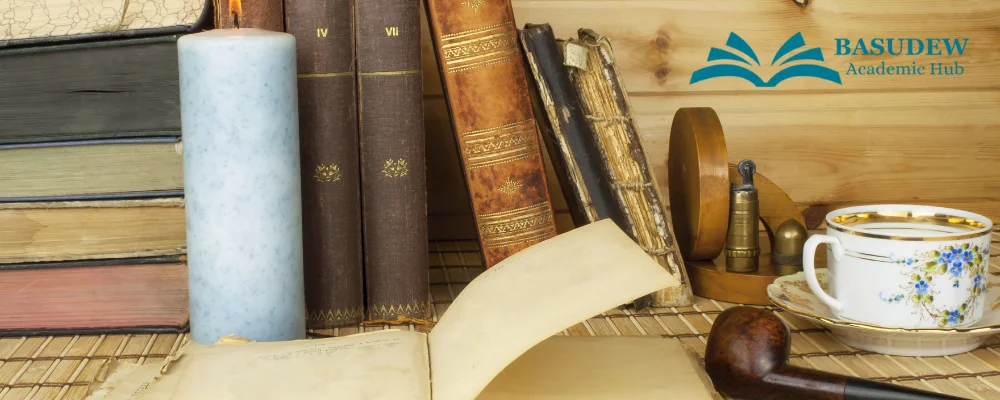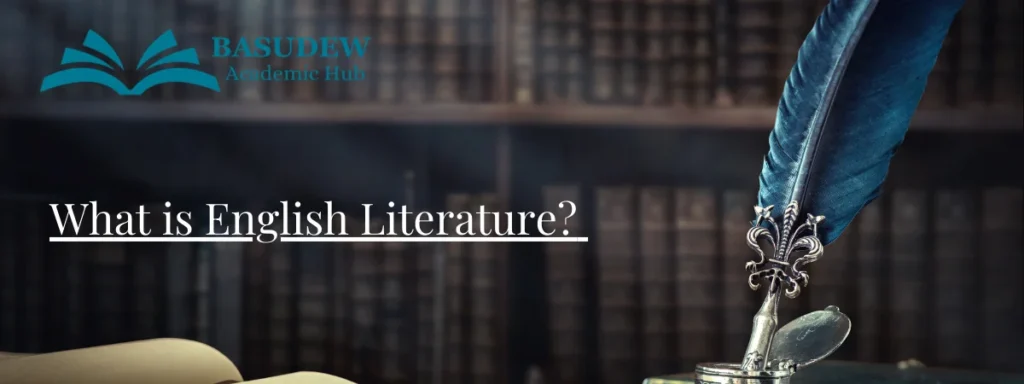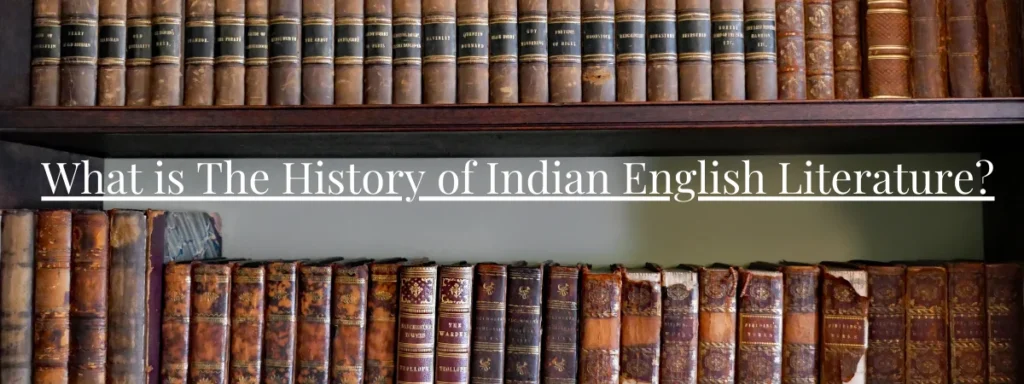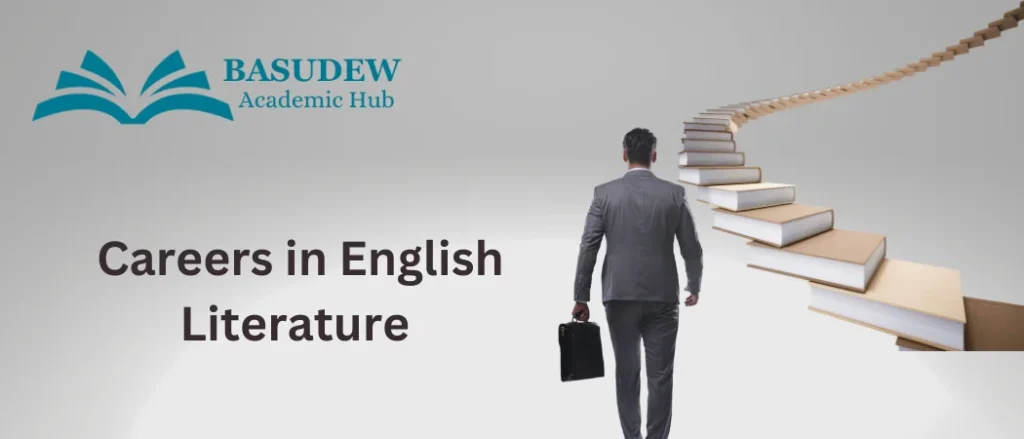English literature is a vast and rich tapestry woven from the stories, poems, essays, and plays written in the English language. This literary tradition spans centuries, evolving through various periods, each marked by distinct styles, themes, and historical contexts.
What is English Literature?
English Literature refers to the body of written works produced in the English language. It includes a wide range of genres such as novels, short stories, plays, and poems. These works are created by authors from different periods, starting from the early medieval era to the present day. English literature covers various themes and styles, reflecting the society, culture, and personal experiences of the writers. It helps readers explore different perspectives and gain insights into human nature and the world.
In modern times, English literature includes works from authors worldwide, reflecting diverse voices and experiences. It remains a vital part of education and culture, offering entertainment, knowledge, and a deeper understanding of life.
Here, we delve into the comprehensive history of English literature, from its origins to the modern day.
The History of English Literature
English literature has a rich and diverse history spanning over a millennium, starting from the early medieval period to the present day. This journey through time highlights key periods and notable authors who have significantly influenced the literary landscape.
Old English (Anglo-Saxon) Period (450-1066
The earliest phase of English literature is known as the Old English or Anglo-Saxon period. It began with the arrival of the Anglo-Saxons in England. The literature of this time was mainly oral and later written in the Old English language.
Beowulf is the most famous work from this era, an epic poem that tells the story of a heroic warrior who battles monsters and dragons. This period also includes religious texts like those by Caedmon and Cynewulf, who wrote religious poetry.
Middle English Period (1066-1500)
Following the Norman Conquest in 1066, the English language evolved, incorporating many Norman French elements. This period is known as the Middle English period.
Geoffrey Chaucer is the standout figure of this era, often referred to as the “Father of English literature.” His most famous work, “The Canterbury Tales,” is a collection of stories told by pilgrims on their way to Canterbury. This work is celebrated for its vivid characters and insights into medieval society.
The Renaissance (1500-1660)

The Renaissance brought a renewed interest in classical learning and the arts. English literature flourished during this period, marked by the works of many great writers.
William Shakespeare, the most influential writer in English literature, wrote timeless plays such as “Hamlet,” “Macbeth,” and “Romeo and Juliet.” His works explore complex human emotions and societal themes.
Christopher Marlowe is another notable playwright from this period, known for “Doctor Faustus,” which delves into themes of ambition and human limitations.
The Renaissance also saw the rise of poetry, with figures like Sir Philip Sidney and Edmund Spenser, whose epic poem “The Faerie Queene” is a masterpiece of the time.
The 17th Century
The 17th century was a time of political and social upheaval in England, which influenced its literature. The metaphysical poets, including John Donne and Andrew Marvell, wrote intricate and intellectual poetry exploring themes like love, faith, and mortality.
John Milton stands out with his epic poem “Paradise Lost,” which tells the story of the Fall of Man. This work is notable for its complex characters and exploration of free will and redemption.
The Restoration period (1660-1700), following the English Civil War and the Puritan Commonwealth, saw the return of the monarchy. This era is marked by a more relaxed, witty, and satirical literary style, exemplified by John Dryden, who wrote plays, poems, and criticism.
The 18th Century: The Age of Enlightenment
The 18th century, also known as the Age of Enlightenment, emphasized reason, science, and intellectual exchange. Literature of this period often reflected these values.
Jonathan Swift is known for his satirical works, including “Gulliver’s Travels,” which critiques human nature and society. Alexander Pope is famous for his poetic works like “The Rape of the Lock,” which satirizes the superficiality of the upper classes.
The novel as a literary form began to rise during this period, with Daniel Defoe’s “Robinson Crusoe” and Samuel Richardson’s “Pamela.” These early novels focused on individual experiences and moral lessons.
The Romantic Period (1798-1837)
The Romantic period was characterized by a focus on emotion, nature, and individualism, reacting against the industrial revolution and Enlightenment rationalism.
William Wordsworth and Samuel Taylor Coleridge were key figures, co-authoring “Lyrical Ballads,” which emphasized the beauty of nature and simple, heartfelt expression. Lord Byron, Percy Bysshe Shelley, and John Keats are also prominent Romantic poets known for their passionate and imaginative works.
In prose, Jane Austen stands out for her novels like “Pride and Prejudice” and “Emma,” which explore the lives, manners, and relationships of the English gentry with wit and insight.
The Victorian Period (1837-1901)
The Victorian era, coinciding with the reign of Queen Victoria, was a time of significant social change, industrial progress, and moral strictness. Literature from this period often addressed social issues and featured complex characters and detailed settings.
Charles Dickens is one of the most famous Victorian novelists, known for works like “Oliver Twist,” “Great Expectations,” and “A Tale of Two Cities.” His novels often highlighted the struggles of the poor and criticized societal injustices.
Charlotte Brontë’s “Jane Eyre” and Emily Brontë’s “Wuthering Heights” are notable for their intense emotional depth and exploration of individualism and social constraints.
The period also saw the rise of literary realism, with writers like George Eliot (pen name of Mary Ann Evans) whose novel “Middlemarch” is considered one of the greatest in English literature for its detailed depiction of life in a provincial town.
The Early 20th Century: Modernism (1901-1945)
The early 20th century brought modernism, a movement characterized by a break with traditional forms and techniques, reflecting the complexities and uncertainties of the modern world.
James Joyce revolutionized narrative techniques with his novel “Ulysses,” which employs stream-of-consciousness and other experimental forms. Virginia Woolf is another key modernist writer, known for “Mrs. Dalloway” and “To the Lighthouse,” which explore inner consciousness and human experience.
T.S. Eliot’s poetry, including “The Waste Land,” reflects the disillusionment and fragmentation of the post-World War I era.
The Late 20th Century and Beyond
The post-World War II period saw the diversification of English literature, with voices from various cultures and backgrounds contributing to its richness.
George Orwell’s “1984” and “Animal Farm” are influential dystopian works that critique totalitarianism and political oppression. Salman Rushdie’s “Midnight’s Children” explores India’s transition from British colonialism to independence, blending magical realism with historical narrative.
Contemporary English literature continues to evolve, with authors like J.K. Rowling gaining worldwide fame for the “Harry Potter” series, which has captivated readers of all ages.
Kazuo Ishiguro, winner of the Nobel Prize in Literature, is known for his novels “The Remains of the Day” and “Never Let Me Go,” which explore memory, identity, and human relationships.
Read Also: What is The History of Indian English Literature?
The history of English literature is a journey through time that reflects the changing landscapes of society, culture, and human thought. From the heroic tales of Beowulf to the magical world of Harry Potter, English literature offers a vast and enriching exploration of the human experience. It continues to grow and adapt, mirroring the complexities of life and the diversity of voices that contribute to its ongoing story.
What is Renaissance in literature?
The Renaissance was a cultural movement that took place in Europe from the 14th to the 17th centuries. It marked a period of revival in art, literature, and learning, inspired by the classical works of ancient Greece and Rome. The term “Renaissance” means “rebirth,” reflecting the renewed interest in these classical ideas. During the Renaissance, there was a significant focus on humanism, which emphasized the potential and achievements of individuals. This era saw remarkable advancements in various fields, including science, exploration, and philosophy.In literature, the Renaissance produced some of the greatest writers and poets, such as William Shakespeare, who wrote timeless plays and sonnets, and Christopher Marlowe, known for his dramatic works. The period also saw the rise of influential artists like Leonardo da Vinci and Michelangelo, who created masterpieces that continue to be celebrated today. Overall, the Renaissance was a time of great creativity and intellectual growth.
Periods of English Literature
| Period | Approximate Dates | Notable Authors and Works |
| Old English (Anglo-Saxon) Period | 450-1066 | Beowulf (Anonymous), Caedmon, Cynewulf |
| Middle English Period | 1066-1500 | Geoffrey Chaucer (“The Canterbury Tales”), William Langland (“Piers Plowman”) |
| The Renaissance | 1500-1660 | William Shakespeare (“Hamlet,” “Romeo and Juliet”), Christopher Marlowe (“Doctor Faustus”), Edmund Spenser (“The Faerie Queene”), Sir Philip Sidney |
| The 17th Century | 1600-1700 | John Donne, Andrew Marvell, John Milton (“Paradise Lost”), John Dryden |
| The 18th Century (Age of Enlightenment) | 1700-1798 | Jonathan Swift (“Gulliver’s Travels”), Alexander Pope (“The Rape of the Lock”), Daniel Defoe (“Robinson Crusoe”), Samuel Richardson (“Pamela”) |
| The Romantic Period | 1798-1837 | William Wordsworth, Samuel Taylor Coleridge (“Lyrical Ballads”), Lord Byron, Percy Bysshe Shelley, John Keats, Jane Austen (“Pride and Prejudice”) |
| The Victorian Period | 1837-1901 | Charles Dickens (“Oliver Twist,” “Great Expectations”), Charlotte Brontë (“Jane Eyre”), Emily Brontë (“Wuthering Heights”), George Eliot (“Middlemarch”) |
| Modernism | 1901-1945 | James Joyce (“Ulysses”), Virginia Woolf (“Mrs. Dalloway”), T.S. Eliot (“The Waste Land”), D.H. Lawrence (“Sons and Lovers”) |
| Postmodernism and Contemporary | 1945-present | George Orwell (“1984”), Salman Rushdie (“Midnight’s Children”), J.K. Rowling (“Harry Potter” series), Kazuo Ishiguro (“The Remains of the Day”) |
Old English Literature: 5th-14th Century

Old English literature, also known as Anglo-Saxon literature, spans from the 5th century to the 14th century. It includes a variety of works written in Old English, the earliest form of the English language. This period marks the beginning of English literary history and is characterized by its unique poetry, prose, and rich storytelling traditions.
Historical Context
The period of Old English literature began after the Anglo-Saxons settled in England around the 5th century. The Anglo-Saxons were a mix of tribes from present-day Germany, Denmark, and the Netherlands. Their language, Old English, evolved from the Germanic languages spoken by these tribes. The literature from this time reflects the culture, beliefs, and daily life of the Anglo-Saxons, as well as their encounters with other cultures, especially after the Norman Conquest of 1066.
Characteristics of Old English Literature
- Poetry and Oral Tradition: Much of Old English literature was passed down orally before being written down. Poetry was a significant part of this tradition, characterized by a strong rhythm and the use of alliteration (the repetition of initial consonant sounds in closely connected words).
- Heroic Themes: Many works from this period focus on heroic themes, reflecting the warrior culture of the Anglo-Saxons. Tales of bravery, loyalty, and the struggle between good and evil are common.
- Christian Influence: After the Anglo-Saxons converted to Christianity in the 7th century, Christian themes became prevalent in their literature. Many works from this period blend pagan and Christian elements.
- Use of Kennings: Kennings are metaphorical expressions used to describe something in a more poetic way. For example, the sea might be called a “whale-road.”
Major Works and Authors
- Beowulf: The most famous work of Old English literature is “Beowulf,” an epic poem that tells the story of its titular hero, Beowulf. He battles the monster Grendel, Grendel’s mother, and later a dragon. The poem reflects the values of the Anglo-Saxon warrior society, such as bravery, honor, and loyalty.
- The Exeter Book: This manuscript is a significant collection of Old English poetry, including “The Seafarer,” “The Wanderer,” and “The Wife’s Lament.” These poems often explore themes of exile, loss, and the passage of time.
- The Venerable Bede: Bede was a monk and scholar who wrote “Ecclesiastical History of the English People” in Latin. This work provides a detailed history of England and its conversion to Christianity, offering valuable insights into the period.
- The Anglo-Saxon Chronicle: This is a collection of annals chronicling the history of the Anglo-Saxons. Written in Old English, it provides a year-by-year account of significant events, such as battles, plagues, and kings’ reigns.
Language and Style
Old English is quite different from modern English, making it difficult for contemporary readers to understand without specialized study. The language has a complex grammar system with various cases, genders, and numbers. The vocabulary also includes many words no longer in use today.
The poetic form in Old English relies heavily on alliteration rather than rhyme. Each line typically consists of two half-lines separated by a caesura (a pause), with a strong rhythm and repeated sounds that enhance the oral recitation.
Transition to Middle English
The transition from Old English to Middle English began after the Norman Conquest of 1066. The Normans brought with them the Old French language, which greatly influenced the development of English. This period saw a decline in the use of Old English and the gradual emergence of Middle English.
Legacy
The legacy of Old English literature is profound. It provides a window into the early history and culture of England. The themes and stories from this period have continued to inspire writers and scholars for centuries. Many modern adaptations, translations, and studies have made these ancient texts accessible to contemporary audiences, preserving the rich heritage of Old English literature.
In conclusion, Old English literature is a foundational part of English literary history. From epic poems like “Beowulf” to the historical accounts in “The Anglo-Saxon Chronicle,” these works offer valuable insights into the early English-speaking world. Despite the language barrier, the themes of heroism, faith, and human struggle resonate through the ages, reminding us of our shared cultural roots.
Medieval English Literature: 14th- 15th Century
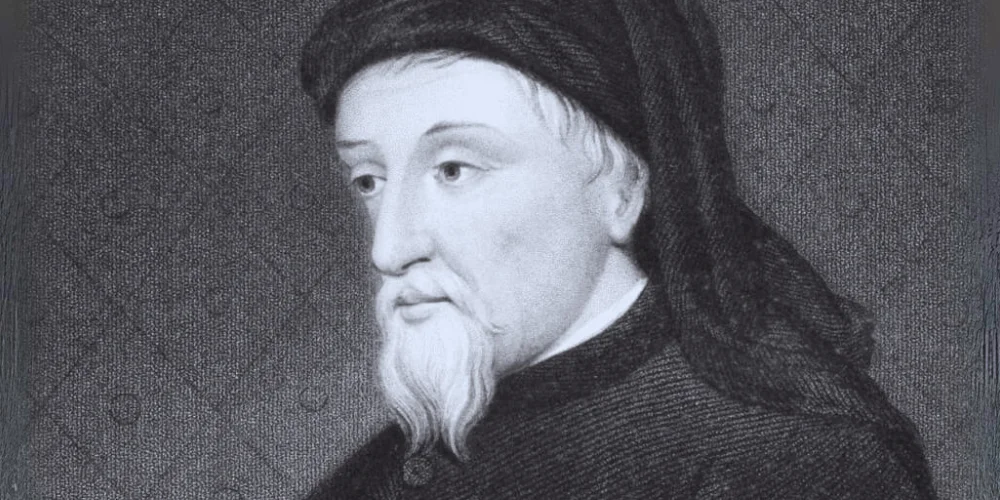
Medieval English literature, spanning the 14th and 15th centuries, is a rich and diverse period that marks the transition from Old English to Middle English. This era produced some of the most enduring works in the English literary canon and reflects the social, religious, and political changes of the time.
Historical Context
The 14th and 15th centuries were times of significant upheaval in England. The Black Death (1347-1351) drastically reduced the population, leading to social and economic changes. The Hundred Years’ War (1337-1453) between England and France, and the Wars of the Roses (1455-1487) between rival English noble houses, also shaped this period. Additionally, the influence of the Church was profound, though it faced challenges from various movements questioning its authority.
Characteristics of Medieval English Literature
- Middle English: The language of this period evolved from Old English, incorporating many Norman French words due to the Norman Conquest of 1066. Middle English is more recognizable to modern readers but still quite different from today’s English.
- Religious Themes: Religion was central to medieval life, and literature often reflected this. Many works were didactic, aiming to teach moral lessons or religious principles.
- Chivalry and Courtly Love: The ideals of chivalry and courtly love became popular themes, especially in romance literature. Knights, quests, and noble deeds were common motifs.
- Allegory: Medieval writers frequently used allegory, where characters and events symbolized deeper moral or spiritual meanings.
Major Works and Authors
- Geoffrey Chaucer: Known as the “Father of English Literature,” Chaucer’s most famous work is “The Canterbury Tales.” This collection of stories is told by a group of pilgrims traveling to Canterbury. Each tale reflects different aspects of medieval society, from the noble knight to the bawdy miller. Chaucer’s use of vernacular English and his vivid characterizations make this work a cornerstone of English literature.
- William Langland: His work “Piers Plowman” is an allegorical narrative poem that critiques the social and religious issues of the time. Through a series of dream visions, the poem explores the struggles of the common people and the corruption within the Church.
- Sir Gawain and the Green Knight: This anonymous chivalric romance tells the story of Sir Gawain, one of King Arthur’s knights, who accepts a challenge from the mysterious Green Knight. The poem explores themes of honor, bravery, and the complexities of human nature.
- Julian of Norwich and Margery Kempe: These two female authors contributed significant religious writings. Julian of Norwich’s “Revelations of Divine Love” is a series of mystical visions, while Margery Kempe’s “The Book of Margery Kempe” is considered the first autobiography in English, detailing her spiritual journey and pilgrimages.
Language and Style
Middle English literature is marked by its use of the vernacular, making literature more accessible to the common people compared to the previously dominant Latin and French. The language is more flexible, allowing for greater expression and creativity.
Legacy
The literature of the 14th and 15th centuries laid the groundwork for the Renaissance and the modern English literary tradition. Works from this period continue to be studied and appreciated for their insight into medieval life and their literary artistry. The themes of love, honor, faith, and social critique remain relevant, resonating with readers even today.
In summary, medieval English literature from the 14th to 15th centuries is a vital part of the English literary heritage. Through the works of authors like Chaucer and Langland, and texts like “Sir Gawain and the Green Knight,” we gain a rich understanding of medieval society, its values, and its complexities. These works, with their blend of entertainment and moral teaching, continue to captivate and inform modern audiences.
Elizabethan Age/ The Golden Age: 16th to Early 17th Century

The Elizabethan Age, often referred to as the Golden Age, spanned from the late 16th century to the early 17th century, coinciding with the reign of Queen Elizabeth I (1558-1603). This period is celebrated for its remarkable contributions to English literature, drama, and culture, marked by the flourishing of the arts and the rise of iconic literary figures.
Historical Context
The Elizabethan Age was a time of political stability and economic growth in England. Queen Elizabeth I’s reign brought about a sense of national pride and unity after years of religious and political turmoil. The defeat of the Spanish Armada in 1588 bolstered England’s maritime power, and the exploration of new lands expanded its influence.
This era also saw the rise of the English Renaissance, influenced by the broader European Renaissance movement. The revival of classical learning and humanism shaped the intellectual landscape, encouraging artistic expression and innovation.
Characteristics of Elizabethan Literature
- Dramatic Flourishing: The period is best known for its advancements in drama. Playwrights experimented with complex characters, intricate plots, and rich language, leading to the creation of some of the most enduring works in English literature.
- Poetic Innovation: Poetry thrived during the Elizabethan Age, with the sonnet form becoming particularly popular. Poets like Edmund Spenser and Philip Sidney explored themes of love, beauty, and nature in their works.
- Prose Development: Prose writing also saw significant development, with a focus on essays, translations, and explorations of new literary forms. The rise of humanism is evident in the prose of the period.
- Exploration and Adventure: The spirit of exploration and discovery is reflected in the literature of the time, mirroring England’s expanding horizons through voyages and trade.
Major Works and Authors
- William Shakespeare: Perhaps the most famous figure of the Elizabethan Age, Shakespeare’s works remain central to English literature. His plays, including tragedies like “Hamlet” and “Macbeth,” comedies like “A Midsummer Night’s Dream,” and histories like “Henry V,” showcase his mastery of language, deep understanding of human nature, and inventive storytelling.
- Christopher Marlowe: A contemporary of Shakespeare, Marlowe’s works, such as “Doctor Faustus” and “Tamburlaine,” are known for their ambitious themes and powerful, poetic language. His contributions to drama were pioneering, particularly in the use of blank verse.
- Edmund Spenser: Spenser’s epic poem “The Faerie Queene” is a cornerstone of Elizabethan literature. This allegorical work celebrates the virtues of chivalry and glorifies Queen Elizabeth I.
- Philip Sidney: Sidney’s “Astrophel and Stella,” a sonnet sequence, is one of the most important works of Elizabethan poetry. His prose work “The Arcadia” also holds a significant place in the literary landscape of the time.
Language and Style
The language of the Elizabethan Age is characterized by its richness and flexibility. The period saw the standardization of English grammar and spelling, making literature more accessible to a broader audience. Writers employed a range of stylistic devices, such as iambic pentameter in poetry and blank verse in drama, to enhance the expressive power of their works.
Heritage
The Elizabethan Age left an indelible mark on English literature. The innovations in drama and poetry during this period set the stage for future literary developments. Shakespeare’s influence, in particular, is seen in the works of countless later writers, and his plays continue to be performed and studied worldwide.
In summary, the Elizabethan Age was a golden era of literary and artistic achievement. The works of Shakespeare, Marlowe, Spenser, and Sidney, among others, embody the spirit of creativity and exploration that defined the period. This era’s contributions have shaped the course of English literature, making it a cornerstone of the cultural heritage that continues to inspire and captivate audiences today.
Restoration Age: 17th to 18th Century
The Restoration Age, spanning from the late 17th century to the early 18th century, marks a significant period in English literature and history. This era began with the restoration of the monarchy in 1660 when King Charles II returned to the throne, ending the period of the Commonwealth under Oliver Cromwell. The Restoration Age is known for its distinctive literary style, themes, and the flourishing of various genres, particularly drama and satire.
Historical Context
The Restoration of the monarchy brought significant changes to English society and culture. After the Puritan rule, which had imposed strict moral and religious codes, the return of Charles II ushered in an era of relative freedom and indulgence. The king’s court became a center of culture and sophistication, influencing the literature of the time.
This period also witnessed political and religious conflicts, including the Popish Plot, the Exclusion Crisis, and the Glorious Revolution of 1688, which saw William and Mary ascend to the throne. These events greatly impacted the themes and tone of Restoration literature.
Characteristics of Restoration Literature
- Satire and Wit: Restoration literature is characterized by its sharp wit and satirical tone. Writers used humor and irony to critique society, politics, and human folly.
- Realism and Observational Detail: Authors focused on the realistic portrayal of everyday life, emphasizing detailed observations of society and human behavior.
- Comedy of Manners: This genre, which flourished during the Restoration, satirized the manners and affectations of the upper classes. These plays often featured witty dialogue, sexual innuendo, and complex plots.
- Heroic Drama: Another popular genre was heroic drama, characterized by grand themes of honor, love, and conflict, often set in exotic locations.
- Poetry and Prose: The period also saw the development of new forms in poetry and prose, with writers experimenting with styles and themes that reflected the changing times.
Major Works and Authors
- John Dryden: A prominent figure of the Restoration Age, Dryden was a versatile writer known for his poetry, plays, and criticism. His works include “Absalom and Achitophel,” a political satire, and “Mac Flecknoe,” a mock-heroic poem. Dryden also wrote heroic dramas like “All for Love.”
- Aphra Behn: One of the first professional female writers in English literature, Behn is best known for her play “The Rover.” Her works often explored themes of gender, power, and colonialism. She also wrote the novel “Oroonoko,” which dealt with issues of slavery and race.
- William Congreve: A key figure in the comedy of manners, Congreve’s plays, such as “The Way of the World” and “The Mourning Bride,” are noted for their sharp wit and intricate plots.
- Samuel Pepys: Though not a literary figure in the traditional sense, Pepys’s diary provides invaluable insights into the daily life and events of the Restoration period. His detailed accounts of the Great Plague, the Great Fire of London, and other events offer a vivid picture of the time.
- John Bunyan: Known for his allegorical work “The Pilgrim’s Progress,” Bunyan’s writings reflect the religious fervor of the period and the struggle for spiritual redemption.
Language and Style
The language of Restoration literature is marked by its clarity, precision, and elegance. Writers employed a more direct and straightforward style compared to the elaborate prose of earlier periods. This era also saw the standardization of English grammar and spelling, contributing to the development of modern English.
Upshot
The Restoration Age left a lasting impact on English literature. The period’s emphasis on wit, realism, and social commentary paved the way for the development of the novel and other literary forms in the 18th century. The works of Dryden, Behn, Congreve, and others continue to be studied and appreciated for their insight into human nature and society.
In summary, the Restoration Age was a vibrant and transformative period in English literature. The return of the monarchy brought about a cultural revival that is reflected in the era’s diverse literary output. From the sharp wit of Restoration comedies to the profound religious allegories, the literature of this time offers a rich and nuanced view of the complexities of 17th and early 18th-century England.
The 18th Century English Literature

The 18th century, often referred to as the Age of Enlightenment or the Augustan Age, was a remarkable period in English literature. This era was marked by the rise of the novel, the development of satire, and the flourishing of poetry and essays. It was a time when writers focused on reason, logic, and the examination of human nature and society.
Historical Context
The 18th century was a time of significant social, political, and intellectual change. The Enlightenment, an intellectual movement emphasizing reason and individualism, profoundly influenced literature. This period also saw the expansion of the British Empire, the growth of the middle class, and advances in science and industry. These changes were reflected in the themes and forms of literature.
Characteristics of 18th Century Literature
- Satire and Social Critique: Many writers used satire to critique society, politics, and human behavior. They employed humor, irony, and exaggeration to expose the follies and vices of their time.
- Rise of the Novel: The novel emerged as a significant literary form. Writers focused on realism, exploring the lives, thoughts, and emotions of ordinary people.
- Poetry and Prose: Poetry remained popular, with poets often writing in a formal, structured style. Essays and periodicals also flourished, providing commentary on contemporary issues.
- Focus on Reason and Logic: Influenced by the Enlightenment, literature emphasized reason, logic, and empirical evidence. Writers sought to understand and explain human nature and the world.
Major Works and Authors
- Jonathan Swift: Known for his satirical works, Swift’s most famous book, “Gulliver’s Travels,” critiques human nature and society through the adventures of Lemuel Gulliver in fantastical lands. His essay “A Modest Proposal” satirically suggests solving poverty by eating poor children, highlighting the cruelty of British policies towards the Irish.
- Alexander Pope: A leading poet of the time, Pope is known for works like “The Rape of the Lock,” a mock-epic poem that satirizes the vanity of the aristocracy. His “Essay on Criticism” and “The Dunciad” reflect his mastery of heroic couplets and his sharp wit.
- Daniel Defoe: Often credited with writing the first English novel, Defoe’s “Robinson Crusoe” tells the story of a castaway’s survival on a deserted island. Defoe’s “Moll Flanders” is another notable novel that explores the life of a woman navigating the challenges of 18th-century society.
- Samuel Johnson: An influential essayist, critic, and lexicographer, Johnson’s “Dictionary of the English Language” was a monumental work that standardized English spelling and usage. His essays, particularly those in “The Rambler” and “The Idler,” offer profound insights into human nature and society.
- Henry Fielding: Known for his novels “Tom Jones” and “Joseph Andrews,” Fielding’s works are characterized by their humor, vivid characters, and exploration of social issues.
Consequence
The 18th century laid the foundation for modern English literature. The development of the novel as a literary form has had a lasting impact, and the satirical works of Swift and Pope continue to be relevant for their incisive social critique. The emphasis on reason, realism, and exploration of human nature in this period set the stage for the literary movements that followed.
In summary, the 18th century was a dynamic and transformative period in English literature. Through satire, novels, poetry, and essays, writers of this era explored the complexities of society and human nature, leaving a rich legacy that continues to influence literature today.
The Romantic Period: From 19th Century
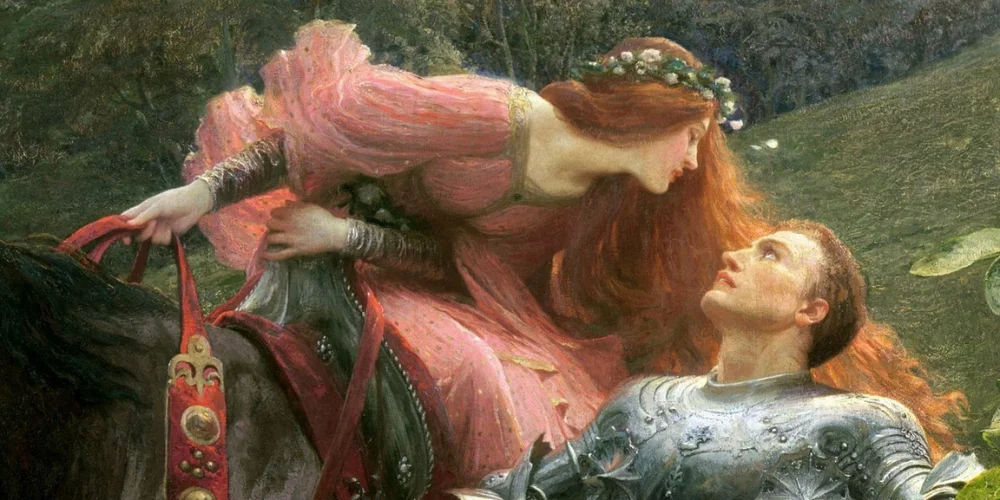
The Romantic Period, which began in the late 18th century and peaked during the 19th century, was a significant era in English literature. This period was marked by a shift away from the emphasis on reason and order of the Enlightenment to a focus on emotion, nature, and individualism. The Romantic writers sought to express the sublime beauty of the natural world and the depths of human emotion.
Historical Context
The Romantic Period arose as a reaction to the Industrial Revolution and the changes it brought to society. The rapid industrialization and urbanization led to a sense of loss regarding the natural world and traditional ways of life. Additionally, the French Revolution (1789) and the subsequent political upheaval influenced Romantic writers, who often supported ideals of freedom and individual rights.
Characteristics of Romantic Literature
- Emphasis on Emotion and Imagination: Romantic writers placed a high value on intense emotions, imagination, and the inner experiences of individuals. They believed that these elements were essential for creating true art.
- Nature as a Source of Inspiration: Nature played a central role in Romantic literature. Writers viewed the natural world as a source of beauty, spiritual renewal, and profound truths.
- Individualism and Personal Freedom: Romantic literature celebrated the individual and personal freedom. Writers emphasized the importance of self-expression and the exploration of personal identity.
- Interest in the Supernatural and Exotic: Many Romantic works feature elements of the supernatural, the mysterious, and the exotic. These elements helped to evoke a sense of wonder and to explore the unknown.
- Rebellion Against Social Conventions: Romantic writers often rebelled against the social and literary conventions of their time. They sought to break free from traditional forms and rules to express their unique visions.
Major Works and Authors
- William Wordsworth: Often considered the father of English Romanticism, Wordsworth’s poetry, such as “Lines Composed a Few Miles Above Tintern Abbey” and “The Prelude,” celebrates the beauty of nature and the depth of human emotion.
- Samuel Taylor Coleridge: A close collaborator with Wordsworth, Coleridge is known for his imaginative works like “The Rime of the Ancient Mariner” and “Kubla Khan,” which blend the natural and the supernatural.
- Lord Byron: Byron’s works, including “Childe Harold’s Pilgrimage” and “Don Juan,” are characterized by their emotional intensity, individualism, and critique of societal norms.
- Percy Bysshe Shelley: Shelley’s poetry, such as “Ode to the West Wind” and “Prometheus Unbound,” reflects his radical ideas about politics, society, and personal freedom.
- John Keats: Known for his rich imagery and exploration of beauty and mortality, Keats wrote poems like “Ode to a Nightingale” and “To Autumn.”
Bequest
The Romantic Period had a profound impact on literature and the arts, influencing subsequent literary movements. Its emphasis on emotion, nature, and individualism continues to resonate in contemporary literature and culture. The Romantic writers’ exploration of the human experience and their celebration of the natural world have left a lasting legacy that continues to inspire and captivate readers.
20th Century Literature
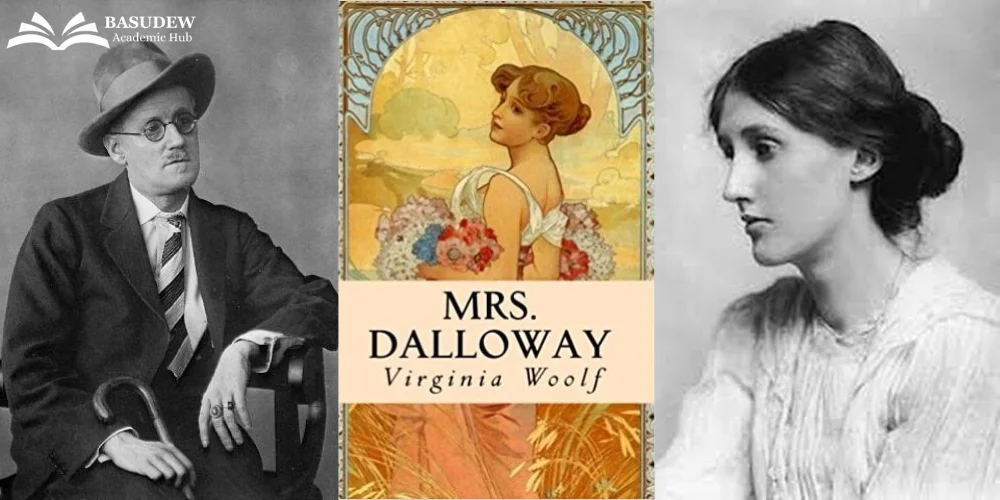
The 20th century was a dynamic and transformative period for literature, marked by rapid social, political, and technological changes. These changes were reflected in the diverse and innovative literary styles and themes that emerged. Writers broke away from traditional forms and experimented with new ways of expressing the complexities of the modern world.
Historical Factors
The 20th century saw two World Wars, the Great Depression, the Cold War, and numerous social revolutions. These events profoundly influenced literature, leading to a sense of disillusionment and questioning of traditional values. The rise of technology and mass media also played a significant role in shaping literary themes and techniques.
Characteristics of 20th Century Literature
- Modernism: Early 20th-century literature is often associated with Modernism, a movement that broke away from traditional forms and conventions. Modernist writers experimented with narrative techniques, such as stream of consciousness, fragmented structures, and multiple perspectives. They focused on themes of alienation, disillusionment, and the inner workings of the human mind.
- Postmodernism: Following World War II, Postmodernism emerged as a reaction to Modernism. Postmodern literature is characterized by its playful, ironic approach, blending high and low culture, and questioning the nature of reality and truth. It often includes metafiction, pastiche, and intertextuality.
- Realism and Social Critique: Many 20th-century writers continued the tradition of Realism, focusing on detailed and accurate portrayals of everyday life. They often addressed social issues such as class, gender, race, and politics.
- Diversity of Voices: The 20th century saw a significant increase in literature from diverse voices, including women, people of color, and writers from colonized nations. This expanded the scope of literature to include varied perspectives and experiences.
Major Works and Authors
- James Joyce: Known for his revolutionary narrative techniques, Joyce’s works, such as “Ulysses” and “A Portrait of the Artist as a Young Man,” are central to Modernist literature.
- Virginia Woolf: A key figure in Modernism, Woolf’s novels, like “Mrs. Dalloway” and “To the Lighthouse,” explore the inner lives of her characters through stream of consciousness.
- F. Scott Fitzgerald: His novel “The Great Gatsby” is a critique of the American Dream and the excesses of the Jazz Age.
- George Orwell: Orwell’s “1984” and “Animal Farm” are seminal works of dystopian fiction that critique totalitarianism and political oppression.
- Toni Morrison: Morrison’s novels, including “Beloved” and “Song of Solomon,” address the African American experience and issues of identity, race, and history.
- Gabriel García Márquez: A leading figure in magical realism, his novel “One Hundred Years of Solitude” blends reality and fantasy to explore the history and culture of Latin America.
Result
The 20th century brought unprecedented diversity and innovation to literature. The experimental techniques and new themes introduced by Modernist and Postmodernist writers continue to influence contemporary literature. The century’s focus on social critique and the inclusion of diverse voices have broadened the understanding of human experience, making literature more inclusive and representative of different cultures and perspectives.
In summary, 20th-century literature is characterized by its experimentation, diversity, and depth. The works of this period reflect the tumultuous changes of the time and continue to resonate with readers, offering insights into the complexities of modern life.

